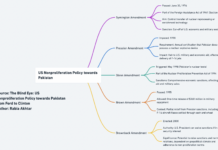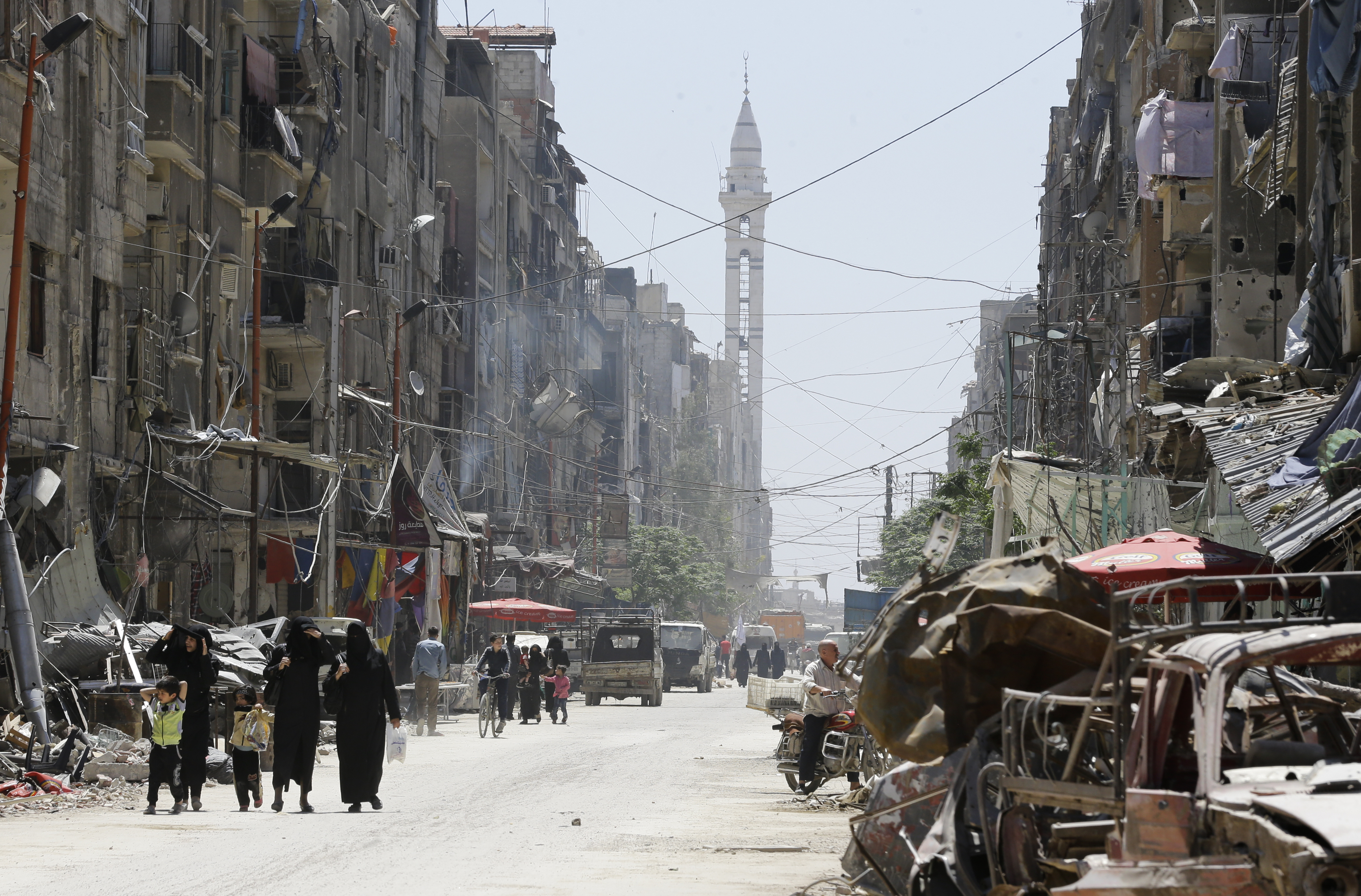Paul Antonopoulos
Syria is one of the few states in the world since the Vietnam War that has resisted US imperialism until Washington has tired itself out and almost fully withdrawn. Although the Syrian war is still occurring, we have seen Trump scrap the CIA funding of jihadist groups in July 2017, demonstrating the slow US withdrawal from Syria. However, the most critical question we must ask is why Syria is being targeted by the American Empire to begin with? The two main tenets to this question is Syria’s role within the Axis of Resistance and its geostrategic location at the crossroads of pipeline diplomacy.
The Axis of Resistance is a coalition between Iran, Syria and the Shi’ite Lebanese paramilitary group, Hezbollah, and has proven to be a powerful anti-imperialist, anti-Western and anti-Zionist force in the Middle East. Although commentators argue the Axis of Resistance is a Shi’ite axis because Iran is a Shi’ite theocracy, Syria is ruled by an Alawite president, and Hezbollah is a Shi’ite militia force, this simple analysis overlooks that Iran is a multiethnic Islamic Republic while Syria is a secular Arab nationalist republic. Such forms of government would normally be at odds with each other, but because of the shared vision that the Middle East should be free from imperialistic ambitions and intervention, it has forced these states to be aligned with one another.
The overthrow of the pro-US Shah in Iran in 1979 saw a power shift that would directly challenge US hegemonic designs on the region, and most importantly, threaten its most important partner in the Middle East, the Zionist entity known as Israel. With a powerful Iran reinvigorated by a religious zeal and openly stating it wanted to export its revolution and defeat Israel in a military confrontation, the new Ayatollah’s could not be tolerated by the US. Syria’s alignment to the Islamic Republic of Iran is not based on a shared religious affiliation, even if the Alawite’s are an offshoot of Shi’a Islam, but rather because both states are directly affected by the existence of Israel and US imperialism.
Syria currently hosts around 600,000 Palestinian refugees and Israel has occupied the oil-rich Golan Heights since the Six-Day War in 1967 when the Zionist entity captured the territory. Iran on the other hand views itself as a leading Islamic nation and believes that it is the duty for all Muslims to engage in a struggle for the Palestinian cause. It is for this reason that the shared hostility with Israel and the struggle against US imperialism has forced the Axis of Resistance into existence. However, despite the threat to Israel, why is the Axis of Resistance completely intolerable to Washington’s designs on the Middle East?
The most important point comes to oil and gas, particularly pipelines. On the eve of the Syrian war, a Qatar-Turkey pipeline was proposed that would bring Qatari gas from the shared Iranian-Qatari South Pars/North Dome Gas Condensate field in the Persian Gulf, to European markets with a pipeline that would pass through Syria; the proposed pipeline was rejected by Damascus, with Agence France-Presse claiming that Assad refused to sign a pipeline deal to “protect the interests of his Russian ally, which is Europe’s top supplier of natural gas.” However, from the very same gas field, but on the Iranian controlled portion, Syria has been receptive to the building of the Islamic Pipeline in the post-war period, in which the pipeline would pass through Iraq, Syria and onwards to Europe. Asia Times correspondent Pepe Escobar stated that “The Iran-Iraq-Syria pipeline – if its ever built – would solidify a predominantly Shi’ite axis through an economic, steel umbilical cord”. An axis consisting of Iran, Iraq and Syria is not through religious identity, as has already been emphasised, but through economic and geopolitical necessities, contrary to what Escobar claims.
The Syrian war presents an opportunity for the US to destroy the Islamic Pipeline proposal by toppling the Iranian-sympathetic Assad in Damascus, which would further isolate Tehran. This is especially true as Syria is the only Arab state that is allied with Iran. However, not only Iranian energy is being compromised because of the difficulty in having Iranian gas and oil reach European markets because of the chaos in Syria and Iraq, but also Syrian energy being exploited by Israel.
The discovery of oil in the southern Israeli-occupied Golan Heights serves as a major reason why Syria is being targeted by the imperialist powers. Genie Energy were given exclusive rights to the exploration and drilling for this oil. The Board of Advisors to Genie Energy include the 46th US Vice President, Dick Cheney; former CIA head and chairman of the Foundation for Defense of Democracies, James Woolsey; Jacob Lord Rothschild of the London banking dynasty family; and media mogul Rupert Murdoch.
It is because of its attempted energy and security considerations that Israel assist US imperialist ambitions in the destruction of the Syrian state. The Golan Heights, which has a 20,000-strong indigenous Syrian Druze population, are now outnumbered by approximately 25,000 Israeli settlers. Although the United Nations and Washington has not recognised Israeli control over the Golan Heights, the extraction of Syrian resources serves not only to bolster Israeli and US capitalist interests, but it also weakens Syria as it loses on revenues that could be used towards state-building or re-paying its increasing foreign debt in the incoming post-war period.
The Axis of Resistance poses as the only real threat to the Israeli state, and therefore the long-protracted war against Syria has the potential to weaken the coalition. Although Israel has not engaged in a direct frontal attack against Syria, it does enough to systematically target Hezbollah and preserve jihadist forces fighting against the Syrian Army near the Golan Heights. The Israeli Minister of Defense claimed in 2015 that “…On a strategic level, in other words, we are not intervening on anyone’s behalf”. Israel views the protracted war against Syria to be to its own benefit.
With Washington labelling Iran and Syria as a part of the ‘Axis of Evil’, and Hezbollah designated as a terrorist organisation, it becomes clearer that American foreign policy in the Middle East is strategically geared towards completely isolating and encircling Iran. However, unlike its invasions of Afghanistan and Iraq, on the eastern and western borders of Iran respectively, the United States has attempted to expand its neo-colonial web through proxy war and covertly sponsoring terrorist organisation.
Respected left-wing scholar Michael Parenti argues that a “Third Worldization” of the United States has emerged. Effectively what is meant by this is that there has been an acceleration of impoverishment in civil society because of Washington’s interest in only serving transnational corporations. Parenti argues that the global American military empire is driven by the idea to secure capital expansion. With this explained, Syria’s lack of reception to the US has limited American capital expansion into the country, thus making it a direct target to US imperialism.
Therefore, the main tenets for why Syria has been targeted by the American Empire is because of its anti-Zionist ideology and resistance to allowing American influence in the country. It is only because of the desire for the US to control the flow of Middle Eastern gas and oil that it has become imperative that the Syrian state is destroyed, allowing for Western corporations to control Syrian oil and for pipelines from US-friendly states to freely pass through.
As seen in Libya, the US-dominated NATO did not necessarily want to govern Libya, but rather ensure that plans for a change in currency trade away from the US dollar were halted and that Western-corporate control of the oil was achieved. The success of Washington’s Libyan Experiment was replicated in America’s proxy war against the Syrian state. However, military and policy planners in the United States failed to acknowledge that unlike an isolated Libya, Syria has allies willing to intervene, as seen with Hezbollah’s troop deployment to Syria in 2012, the deployment of Iranian military advisors in 2012, and the Russian aerial intervention that began in September 2015. Libya was afforded no such help when imperialist ambitions targeted it and completely isolated the besieged state.
Syria however has always been targeted by US imperialists, which is why the wave of the so-called Arab Spring finally opened the opportunity to destabilise the country. On the eve of the US invasion of Iraq in 2003, General Wesley Clark, a retired 4-star U.S. Army general and Supreme Allied Commander of NATO during the 1999 War on Yugoslavia, revealed that he was made aware in 2002 of a plan that was set where the United States would intervene in Iraq, Syria, Lebanon, Libya, Somalia, Sudan and finally Iran (Antonopoulos and Cottle, 2017: 12). Although this did not occur within the five-year time frame that General Wesley Clarke was told, we have seen the destabilisation of all states since 2003, with the exception of Iran, which has instead successfully resisted intense US-led sanctions against it.
In the end, it is now inevitable that the US has failed with its goals in Syria. The strength of the Axis of Resistance, who also had the help of thousands of volunteers from Iraq, Afghanistan, Yemen and Pakistan, has successfully resisted American imperialism in Syria.
Paul Antonopoulos is a Research Fellow at the Center for Syncretic Studies. He has an MA in International Relations from Western Sydney University. His main research interests is the International Relations and Political Economy of the Middle East and Latin America, as well as Great Power Rivalry. He is the co-author of “Syria: The Hegemonic Flashpoint between Iran and Saudi Arabia.”

















